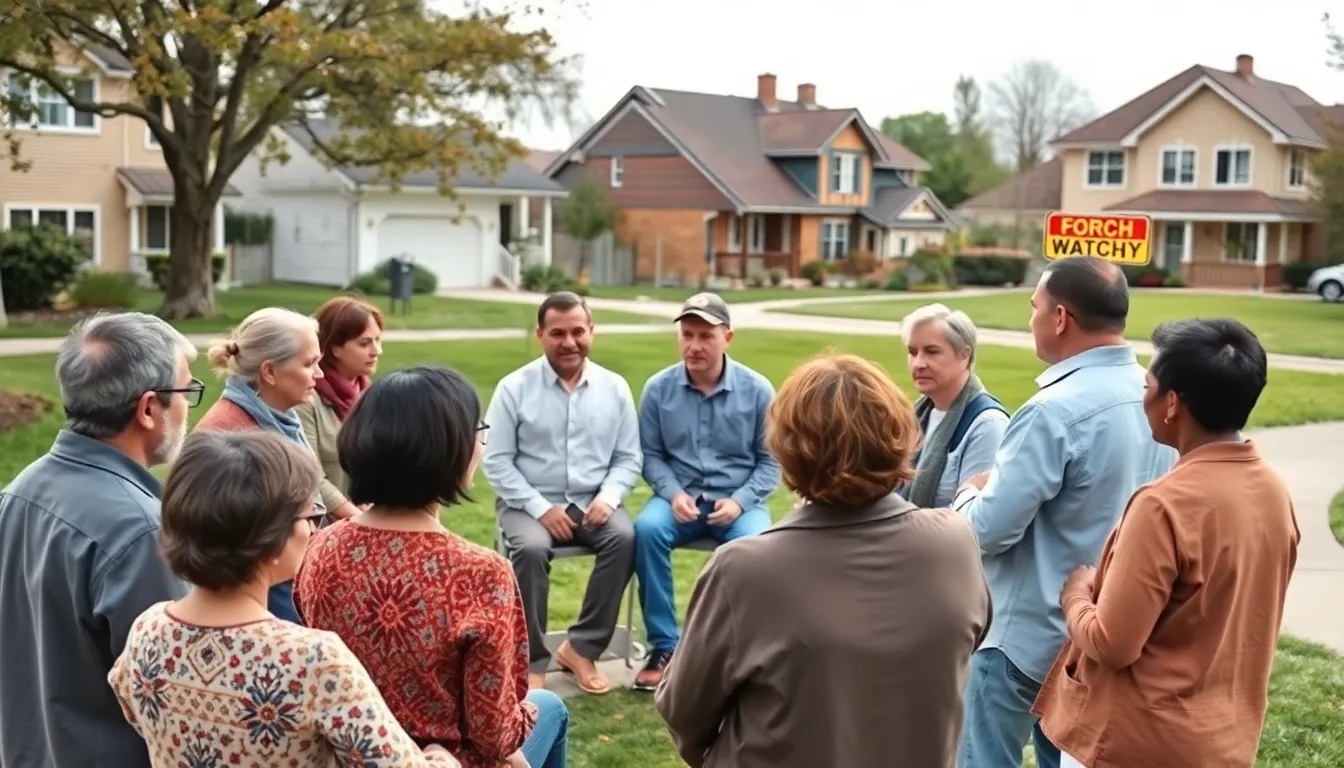Table of Contents
ToggleIn a world where doorbells can now tell you who’s at your door and your fridge might just be plotting against you, home security remains a top priority. Enter home security group letters—your neighborhood’s secret weapon against the lurking dangers of crime. These letters aren’t just ink on paper; they’re a rallying cry for community vigilance and a chance to turn your street into a fortress of safety.
Understanding Home Security Group Letters
Home security group letters represent a strategic step for neighborhoods in enhancing safety. These letters foster a sense of community while raising awareness about local crime.
Definition and Purpose
Home security group letters consist of written communications sent among residents to promote safety initiatives. Their primary purpose involves encouraging collective vigilance against crime. By sharing information about suspicious activities, these letters keep everyone informed. Additionally, they can outline action plans such as neighborhood watch programs. Residents can impact the overall safety of their area by participating actively in these discussions.
Importance of Group Communication
Group communication forms the backbone of effective home security measures. Engaging in consistent dialogue allows residents to share their experiences and concerns. Such exchanges build trust and a sense of unity among neighbors. Furthermore, open lines of communication contribute to quicker responses to potential threats. An informed community stands stronger against crime. In emergencies, well-coordinated teamwork enhances overall effectiveness in addressing security issues.
Components of Home Security Group Letters

Home security group letters contain vital components that ensure effectiveness and clarity. These elements enhance communication and engagement among residents.
Key Elements to Include
Address the letter to all residents within the community. State the purpose clearly to grab attention. Share recent crime statistics to emphasize the urgency of the situation. Include a call to action that encourages residents to participate in safety initiatives. Provide contact information for local law enforcement or neighborhood leaders. Highlight scheduled meetings or events that focus on security discussions.
Tone and Language Considerations
Maintain an approachable tone to foster community spirit. Use clear language that everyone can understand without jargon. Keep sentences concise to ensure easy reading. Including a friendly greeting sets a positive atmosphere right from the start. Encourage input and suggestions to promote inclusivity. Conclude with an upbeat message that motivates cooperation and vigilance.
Best Practices for Writing Home Security Group Letters
Clear communication is essential when drafting home security group letters. Effective letters promote engagement and encourage community members to participate in safety efforts.
Tips for Clarity and Effectiveness
Focus on a straightforward structure that enhances comprehension. Begin with a clear subject line that indicates the letter’s aim. Use bullet points to highlight key information. Provide recent crime statistics for context. Incorporate a strong call to action that urges residents to attend upcoming meetings or participate in initiatives. Maintain an approachable tone to foster openness and collaboration among neighbors.
Common Mistakes to Avoid
Avoid overwhelming readers with excessive jargon or overly complex information. Neglecting to proofread can lead to errors that undermine credibility. Failing to personalize the message may reduce the letter’s impact on residents. Skipping important details, such as contact information for law enforcement, leaves gaps in communication. Lastly, never underestimate the power of a friendly tone; an unfriendly approach can deter participation.
Examples of Home Security Group Letters
Effective home security group letters can enhance neighborhood safety and facilitate communication among residents. Below are two sample letters that can serve as templates for fostering community vigilance.
Sample Letter for Alerting Neighbors
Dear Neighbors,
Recent local incidents of suspicious activity have raised concerns within our community. A few days ago, a vehicle was reported parked near our homes without clear reason, prompting this message. Increased awareness is essential to deter potential crime. Residents are encouraged to report any unusual occurrences to local law enforcement immediately. Working together boosts our community’s security. If anyone has information regarding this matter, please share it with the group. Consider forming a neighborhood watch to keep an eye on our streets.
Thank you for your cooperation,
[Your Name]
[Your Contact Information]
Sample Letter for Organizing a Meeting
Hello Everyone,
A neighborhood security meeting is scheduled for next Thursday at 7 PM in the community center. The purpose is to discuss recent crime trends and strengthen our safety initiatives. Engaging in dialogue about collective strategies helps create a safer environment. Residents are invited to share their concerns and ideas during this gathering. Please RSVP so we can ensure adequate seating. Together, we can make a significant impact on our neighborhood’s safety.
Warm regards,
[Your Name]
Home security group letters are a powerful tool for enhancing neighborhood safety. By fostering communication and collaboration among residents, these letters help create a vigilant community ready to tackle crime. They encourage active participation in safety initiatives and promote a sense of belonging among neighbors.
With clear communication and a friendly tone, these letters can effectively engage residents and motivate them to stay informed and involved. As communities embrace this proactive approach, they’ll likely see a significant improvement in their overall safety and security. Embracing the concept of home security group letters is a step toward a safer, more connected neighborhood.




